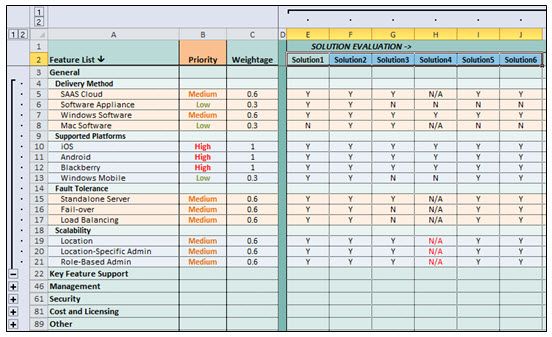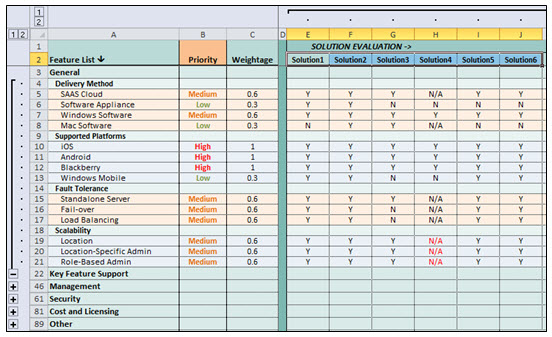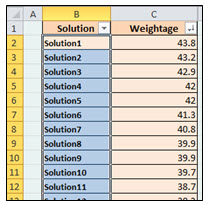
Faced with the Dilemma of Business Solutions Analysis
Myriad of mobile and web technologies emerge every day and organizations are faced with the challenge of evaluating the most suitable solutions for their businesses. Although it sounds simple, it has become quite a challenge since most emerging solutions appear to be rather similar.
At present, evaluation of Mobile Device Management (MDM), Mobile Application Management (MAM), Mobile Enterprise Application Platform (MEAP), Back-end as a Service (BaaS) and numerous cloud solutions are typical business decisions that organizations are struggling to make. If you are faced with this type of challenge as a business analyst what would you do? How can you help an organization decide on the most suitable business solutions for themselves?
Decision Analysis for Comparing Business Solutions
Decision Analysis (DA) includes many procedures and tools for identifying, clearly representing, and formally assessing important aspects of a decision, for prescribing a recommended course of action.
As a business analyst, it is vital to conduct a comprehensive decision analysis on the related business solutions prior to making the final decision. Using a formal decision analysis technique will aid the business analyst to conduct a formal and comprehensive solutions analysis. Carrying out such a formal analysis will also help the business analyst to present and justify the findings more effectively to the organizational leadership.
Considering Multiple Criteria for the Solutions Analysis
Multi-Criteria Decision Analysis (MCDA) is a popular decision analysis technique that can be used for comparing business solutions for an organization. This technique considers multiple criteria in decision making environments, which leads to more informed and better decisions.
There are few key elements required for carrying out an MCDA, such as the,
- List of potential business solutions
- Comprehensive list of features which form the multiple criteria for the analysis
By using Microsoft Excel you can simply devise an elegant Multi-Criteria Grid. In addition to the list of solutions and criteria it is important to state the priority of each criterion as well. Priority categories such as business critical, high, medium and low can be assigned suitable weightages. These weightages can be set to multiply against each solution’s extent of support for a feature, which will provide a score per solution per criteria.
The final sum per solution will depict the solution’s total score based on its level of support for each identified criteria. This model allows the business analyst to rank the business solutions using quantifiable scores. It will also show the strengths and weaknesses of each solution against different business priorities such as platform support, security and so on.
 Figure 1: Sample Multi-critEria grid on Microsoft excel
Figure 1: Sample Multi-critEria grid on Microsoft excel
 Figure 2: Sample Solutions Ranking Based on Weightage scores
Figure 2: Sample Solutions Ranking Based on Weightage scores
Solving the Dilemma
Once the multi-criteria grid is filled up, it will become a powerful tool which helps the business analyst to finalize on the requirements as well as the decision. If the Multi-Criteria Grid was devised using Microsoft Excel the priority list can be automated in such a way, that a change in a criterion’s priority would affect each solutions score.
So how does it help the business analyst? Since most of the time even organizational leadership may not be clear on the requirements, this tool will help the business analyst to obtain their feedback on the business priorities. Further it will help the business analyst to justify the solution recommendations based on the weightage scores. Therefore a MCDA assessment will aid as a requirements prioritization tool, while serving as a solution assessment and validation technique.
Multi-Criteria Grid provides a concise yet holistic view of the level of support of the business solutions against the solution features. This technique has proven to be quite successful in finalizing business solutions for organizations. It can be utilized as a tool among various cross functional departments in order to obtain their views on business priorities.
What are your thoughts?
Has your organization used any similar Decision Analysis tools which were proven to be successful? How did they help you to prioritize requirements and to carry out solutions assessment?
Don’t forget to leave your comments below.
acheter concerta en ligne
… [Trackback]
[…] There you will find 34241 additional Information to that Topic: batimes.com/articles/faced-with-the-dilemma-of-business-solutions-analysis/ […]